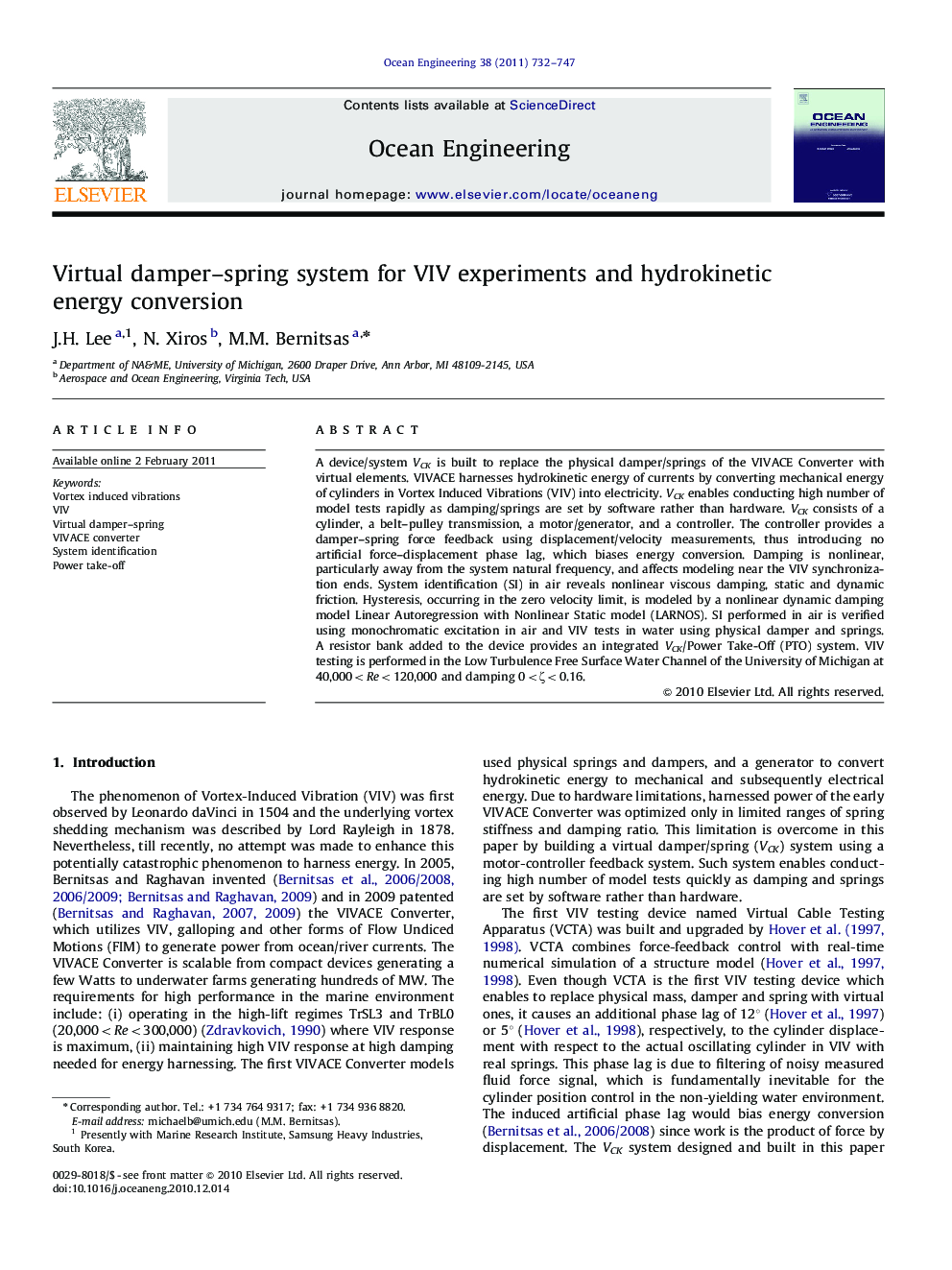| Article ID | Journal | Published Year | Pages | File Type |
|---|---|---|---|---|
| 1726705 | Ocean Engineering | 2011 | 16 Pages |
Abstract
A device/system VCK is built to replace the physical damper/springs of the VIVACE Converter with virtual elements. VIVACE harnesses hydrokinetic energy of currents by converting mechanical energy of cylinders in Vortex Induced Vibrations (VIV) into electricity. VCK enables conducting high number of model tests rapidly as damping/springs are set by software rather than hardware. VCK consists of a cylinder, a belt-pulley transmission, a motor/generator, and a controller. The controller provides a damper-spring force feedback using displacement/velocity measurements, thus introducing no artificial force-displacement phase lag, which biases energy conversion. Damping is nonlinear, particularly away from the system natural frequency, and affects modeling near the VIV synchronization ends. System identification (SI) in air reveals nonlinear viscous damping, static and dynamic friction. Hysteresis, occurring in the zero velocity limit, is modeled by a nonlinear dynamic damping model Linear Autoregression with Nonlinear Static model (LARNOS). SI performed in air is verified using monochromatic excitation in air and VIV tests in water using physical damper and springs. A resistor bank added to the device provides an integrated VCK/Power Take-Off (PTO) system. VIV testing is performed in the Low Turbulence Free Surface Water Channel of the University of Michigan at 40,000
Related Topics
Physical Sciences and Engineering
Engineering
Ocean Engineering
Authors
J.H. Lee, N. Xiros, M.M. Bernitsas,
